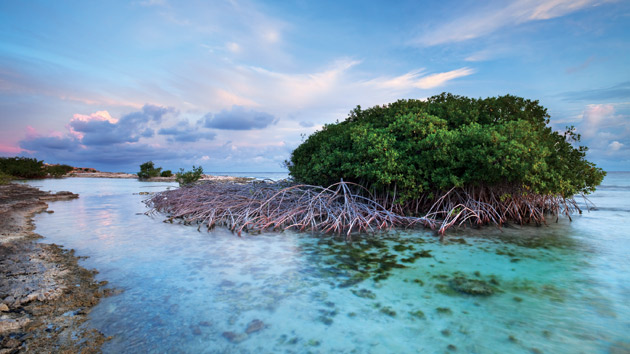Every year, it seems like another historic natural disaster devastates a region of the world. We chastise poor planning efforts and champion better response as we try to think of new mitigation techniques to deal with the havoc that Mother Nature doles out.
But there is one protective force that she has already created for us when it comes to safeguarding our shores. A new study from the Disaster Research Nexus at the Universiti Sains Malaysia shows that coastal mangrove forests in the tropics can serve as a barrier to slow rushing tsunami waves from destroying property and killing citizens.
"Mangrove forests have been observed to play a role in reducing tsunami wave heights if the heights are not too big," states the report. When it comes to megatsunamis like the 2004 tidal wave that killed more than 200,000 throughout Southeast Asia, mangrove trees are not enough to withstand all the force. But against wave heights of up to nine meters, they are very helpful.
How it works is that as the wave approaches the mangrove, it slows down and grows taller. This creates "strong back flows that reduce the height" of the water that has already passed the vegetation line. It essentially sucks the rushing flow backwards and absorbs a significant amount of the potentially destructive energy.

